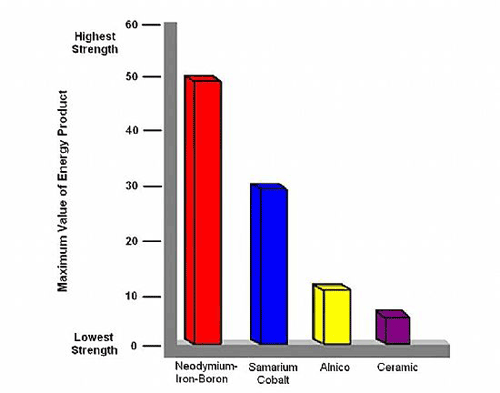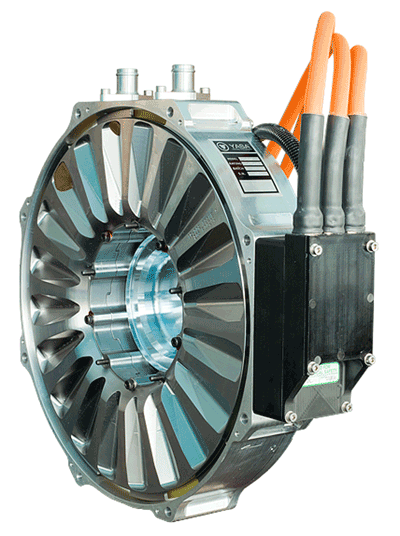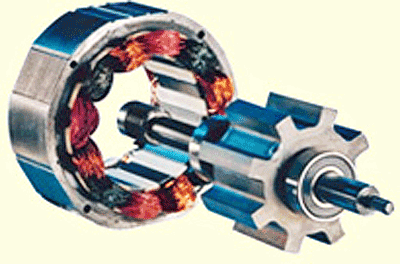Permanent magnet ac motors are used by the vast majority of electric vehicle manufacturers. PM motors provide high efficiency and a broad operation range. But, in industrial apps, most motors are AC induction motors. Induction motors are favored due to their ruggedness, simplicity, and low cost. Ninety percent of industrial motors are induction motors.
Last year there was another good reason for electric vehicle manufactures to look at ac induction motors. These motors have no magnets, and the rare-earth component of the magnets in PM motors suddenly got real expensive. Chinese producers of a number of “rare-earth” materials managed to capture 95% to 98% of the world market by making the stuff so inexpensive no one else could compete. Then, in 2011 prices skyrocketed.
For example, lanthanum oxide — used in ceramics and fuel catalysts — rose from just $8.71/kg in 2008 to average $117/kg in the third quarter of 2011. During the first three months of 2012 it had pulled back to $42.31/kg. Now it has halved again — in September 2012 a kilogram of lanthanum could be picked up for $19. Inside China that same kilogram costs just under $10. Similarly, neodymium oxides rose to $338/kg in Q3 2011 and is now back down to $100/kg as of 17 September.
Rare-earth sources
A NdFeB magnet is made from an alloy of neodymium, iron, and boron. Developed in 1982 by General Motors and Sumitomo Special Metals, neodymium magnets are the strongest type of permanent magnet made, and neodymium and samarium are key elements to efficient PM motors.

Permanent magnet materials.
The price rise has generated new interest in mining at locations in California, Nebraska, Malaysia, and Africa. Additional recycling facilities are also starting up in a number of countries.
The world’s largest refinery for rare-earth metals in Kuantan, Malaysia is approaching completion. The plant, which has the capacity to meet a fifth of the world’s demand, is awaiting a license to operate. Progress toward opening the plant has occurred despite street demonstrations over radiation concerns, regulatory challenges, and the withdrawal of a major equipment supplier worried about the safety of the refinery, which is being built by Lynas, an Australian company. Lynas has been trying for several years to find a site for the permanent disposal of the roughly 20,000 tons a year of low-level radioactive waste that will be produced, and is still struggling to do so.
In the U.S., Molycorp Inc. has announced that its new Project Phoenix heavy rare-earth concentrate facilities at Mountain Pass in California, about 60 miles southwest of Las Vegas, have commenced operation. The company has come up with a proprietary method that it thinks is the answer to the toxic mess that’s part of rare-earth mining. And, if they are correct, they may be up-dating this mining in such a way that could force Chinese competitors to improve the way they operate.
The rare-earth elements — neodymium or samarium in samarium-cobalt (SmCo5) magnets — are not as rare as the term suggests: samarium is the fortieth most abundant element in the earth’s crust, making it more common than tin, whereas neodymium is almost as abundant as copper. However, rare-earth elements are seldom found in concentrated and economically exploitable forms, and that’s why they are referred to as “rare.”
New ac induction motors
Recently the aluminum rotor common in AC induction motors has been upgraded to copper, which reduces resistance and improves efficiency. Are they the equal of the best of the PM motors? It takes a rather complex speed-torque operational analysis to say for sure, but for sure they are close.
The Tesla model Model S is powered by a transverse rear-mounted liquid-cooled ac induction motor capable of 16,000 rpm. It drives the rear wheels through a single-speed transaxle with a 9.73-to-1 reduction that feeds an open differential. The motor is a compact package that makes 362 horsepower in standard trim; with a Signature Performance variant good for 416 hp. Both carry the same EPA combined consumption rating of 38 kWh/100 miles (89 MPGe).
Some other motor types
In the U.K., a group of engineering companies has won funding for research into the next generation of electric vehicle drivetrain systems that will reduce dependency on rare-earth metals. Sevcon is leading the collaborative project, with other participants being Cummins Generator Technologies and Newcastle University’s Power Electronics and Drives Research Group. The team is to develop a drive system based around advanced high torque density switched reluctance (SR) motors. Over £500,000 in matched funding has been received from the government-backed Technology Strategy Board (TSB) and the Department for Business Innovation and Skills (BIS). It is anticipated that the project should result in a drive system being ready for volume production within four years.
Other organizations have also been investigating automotive drive trains that minimise the use of rare-earth magnets. Around one year ago Drive System Design (DSD) and Oxford, UK bases Yasa Motors introduced the Multi-Speed Traction System (MSYS) for electric vehicles that has a yokeless and segmented armature motor. This compact, lightweight (45 kg), integrated, three-speed system yields 60 kW continuous and about 200-Nm torque. The overall powertrain efficiency is claimed to be better than 91%.

The Multi-Speed Traction System motor for electric vehicles.
The motor has some good specifications:
• Weight 25 kg
• Max Peak Power 100 kW at 380V
• Peak torque 750 Nm at 360 Arms
• Continuous Power 55 kW
• Peak Efficiency >95%
Another company involved in new, rare-earth free, motor technology is Nidec SR Drives Ltd (NSRDL) in the UK (www.srdrives.com). They are making a switched reluctance motor. The rotor’s position relative to the stator is detected using a simple hardware sensor or by electronic sensorless means. The controller then energizes each stator winding only when it can produce useful torque. By suitable timing of the stator excitation, the machine can operate as a motor or generator, with excellent efficiency over a wide range of speed and torque.

The Nidec SR Drives switched reluctance motor.
The newest ac induction motors for standard industrial use, such as the Siemens NEMA three-phase SD100, include low friction bearings, copper rotors, innovative cooling methods, and precision air gaps. These units provide efficiencies of 93.7% and the latest variable frequency controller technology holds this efficiency across a wide speed and load range while taking only 3% to 4% off of the efficiency number. ■
Advertisement
Learn more about Electronic Products Magazine





